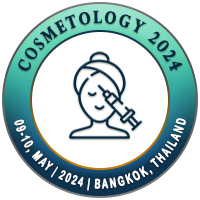
Anant Singh
Kalka Dental College, IndiaTitle: Color stability of pediatric restorative material over pediatric drug formulation
Abstract
Introduction: Various liquid drug formulations are prescribed to the children. Frequent use of these drugs can result in staining of dental restorations, affecting their longevity and durability.
Aim: This aim of the study is to evaluate the effect of different paediatric drug formulations on color stability of various esthetic restorative materials.
Materials and Methods: Two different restorative materials namely Light cure Glass ionomer cement (i-seal, Prevest) and Light cure Composite (Fusion Flo, Prevest) were used to prepare total 88 (44 from each material) cylinder shaped specimens having dimensions of diameter 5 mm and height of 3 mm. The specimens of each material were divided into four experimental groups (n = 11) through stratified random sampling technique and will be immersed in four different liquid medications: Group 1 – Cefixime Oral Suspension IP(50mg/5ml)(Zifi , FDC), Group 2 – metronidazole Benzoate Oral Suspension (J.B. Chemicals & Pharmaceutical LTD.), Group 3 – Sodium Valporate Oral Suspension IP (Valparin 200), Group 4 – Montelukast sodium & Levocetirizine Dihydrochloride syrup(Montair LC kid). All samples will be agitated for 2 min and cycle will be repeated every twelve hourly for 1 week with intermittent pH cycling to simulate conditions similar to that of oral environment. Color stability of all specimens will be evaluated using spectrophotometer (CS-600A/600B). One way ANOVA will be used for statistical analysis.
Results: The mean Means and standard deviations of ΔE were calculated. In composite resin, the highest ΔE value was recorded in Group 3 (4.70 ± 1.89 ), the lowest value of ΔE was recorded in Group 2 (3.23 ± 2.02). In GIC, the highest ΔE value was recorded in Group 3 (3.61 ± 2.27 ) whereas the lowest value of ΔE was recorded in Group 1 (0.55 ± 0.36).
Conclusions: Result shows that the group treated with composite resin and exposed to sodium valproate exhibited the most pronounced color changes, while the group treated with GIC and exposed to metronidazole demonstrated the least color alteration. Furthermore, significant color changes were observed in the GIC group compared to the LC composite resin group for all four drug formulations.
Biography
TBA

